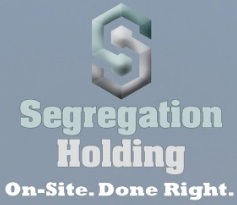IRS Repair and Capitalization Regulations 2014…how do they affect me?
The IRS has released much-anticipated final “repair” regulations (T.D. 9636). These fall under IRC § 162(a) and § 263(a). The new Repair Capitalization regs govern when taxpayers must capitalize and when they can deduct their expenses for acquiring, maintaining, repairing, and replacing tangible property. The final regulations make significant taxpayer-friendly changes to the 2011 temporary repair capitalization regulations. Compliance with the maze of rules in the final repair capitalization regs, however, will challenge virtually every business, especially in light of the New Year.
So, what is the impact of the 2014 repair capitalization regs? The final regulations are more taxpayer-favorable than the temporary regulations. They still require a significant investment in time and talent to assure compliance. This is simply because of the 200+ pages of minutia. Every business with at least some fixed assets – hmm, 99% –must comply with these new rules for its first tax year beginning on or after January 1, 2014. Some industries, such as retail, manufacturing, hospitality and utilities, are specifically impacted. The difference between expensing and capitalizing is huge in most cases. It can mean the difference between an immediate deduction at full value versus a deduction spread out over 5, 10, 15, 20 years or more. Repair Capitalization Compliance begins January 1, 2014 without exception.
Eric Lucas, in KPMG’s Washington National Tax Office, stated, “The final repair regulations generally provide some positive benefits for businesses and tax practitioners. I think the expansion of the routine maintenance safe harbor in the building property is helpful, although they used a 10-year period to apply the test, which may be somewhat limiting, but overall it’s more than what existed under the temporary regulations. Just overall I would say the rules are more user friendly in allowing companies to follow their book policy, so I think many companies and practitioners will find that helpful.”
One thing is for certain, the final version of these repair capitalization regulations has the accounting world engaged. As well they should be.
From our perspective here at Segregation Holding LLC, we see them as a God-send. Virtually every owner of commercial property with tangible personal property MUST COMPLY. The IRS is clear. Who wants to pay penalties and interest when an income tax refund is available?
Cost segregation is now THE method you must employ in order to PROPERLY apply this new repair capitalization regulation. Your CPA simply does not have the credentials to properly identify building components. He is not an architect or construction engineer. What does the IRS say? Preparation by an industry expert.
Get your free evaluation today and be ahead of the rush. We make the process simple. It’s free and no obligation. Complete our client questionnaire. It should take about 5 minutes. We’ll send you a detailed benchmark analysis applying the new repair and capitalization regulations. Take it to your CPA or tax advisor. Confirm your ability to take advantage and qualify for your income tax refund. Why wait? Do it today. The process to get your tax refund, from start to finish, takes about 60 to 90 days.
Follow our tweets at Twitter. “Like” us on Facebook! Connect with the owner, Jeff Hobbs, on LinkedIn.
Want your questions answered now? Call us at 972-865-9050 or 972-897-8019.




